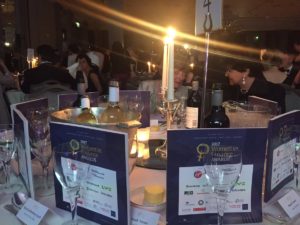By Ernest Attoh
GrowthBusiness.co.uk, DiversityQ, What Investment magazine and Bonhill Group plc reveal shortlisted nominations for the Women in Finance Awards Ceremony
After last year’s event which hosted over 500 of the UK’s top finance professionals, Women in Finance Awards returns this year on the 26th June.
This year Women in Finance London reported a record amount of nominations for the London series which made the final shortlist even tougher to finalise. The awards dinner is to be held at the Grosvenor House in an evening of celebrating and encouraging female talent in finance and gender balance at all levels.

Due to the amount of nominations received and the upsurge of professionals getting on top of the ladder, the Fintech Champion of the Year award has been segmented into the following sub-categories: ‘Banking’, ‘Funding’ and ‘Open Innovation’. With over 250 nominations entered from companies such as HSBC, NatWest, Metro Bank, UBS, Zurich Insurance, Visa, Wealth for Women, McGuireWoods London LLP, Deloitte, Voulez Capital, FINTECH Circle, Coutts & Co, LV= and PwC, 160 professionals have been shortlisted for the following awards:
- Accountant of the year
- Advocate of the year (Sponsored by Wesleyan)
- Ambassador of the year (Sponsored by PwC)
- Banker of the year
- Disruptor of the year (Sponsored by London Stock Exchange Group)
- Diversity Initiative of the year
- Employer of the year (Sponsored by Rolls Royce)
- Finance team leader of the year (Lead by a woman)
- Financial advisor of the year
- Fintech champion of the year (Banking)
- Fintech champion of the year (Funding)
- Fintech champion of the year (Open innovation)
- Fund manager of the year
- Insurance leader of the year (Sponsored by LV=)
- Legal adviser of the year
- Rising star of the year
- Specialist inventor of the year
- Wealth manager of the year (Sponsored by J.P. Morgan)
- Woman of the year (Sponsored by Schroders)
View this year’s finalists for the Women in Finance Awards.
“Many of the women who are recognised in these awards are pivotal in making the industry genuinely more inclusive and attractive to a wider spectrum of employees, beyond the issue of gender.” Says Mary-Anne Daly, CEO of Cazenove Capital, our 2017 Wealth Manager of the Year award winner.
Book your place for the awards today and come together with industry leaders and inspirational role models. Come and witness female empowerment within the finance industry…Change, Lead, Inspire



 Emma Watson addressed the United Nations in 2014, urging men to join the feminist movement; Barak Obama supported the cause when he proclaimed he was a feminist. Many companies recognise “men as allies” as a critical component of their diversity and inclusion efforts. And yet, support by men for gender equality is waning. Particularly in companies.
Emma Watson addressed the United Nations in 2014, urging men to join the feminist movement; Barak Obama supported the cause when he proclaimed he was a feminist. Many companies recognise “men as allies” as a critical component of their diversity and inclusion efforts. And yet, support by men for gender equality is waning. Particularly in companies. The privilege of invisibility
The privilege of invisibility Societal norms and expectations
Societal norms and expectations So how do we engage men?
So how do we engage men?





